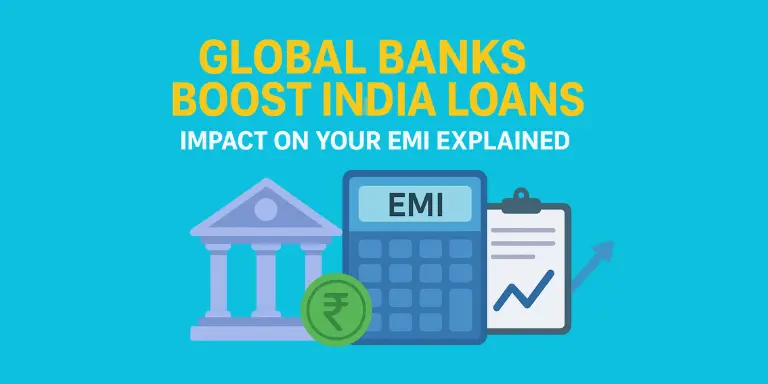CitiBank Raises Stakes in India: What It Means for Loans, Credit & EMIs

Introduction
Citibank is stepping up its investment in India as Indian companies increasingly look abroad for growth. While this move primarily targets institutional deals, it could ripple into consumer finance impacting credit supply, borrowing cost, and ultimately your EMIs. Let’s unpack why this matters and how you should prepare.
1. Why CitiBank’s India Move Is Important
-
CitiBank’s banking head, Viswas Raghavan, highlighted the firm’s intent to support Indian firms with capital and strategic advice.
-
As global banks deploy more capital into India, they increase competition in credit markets—potentially boosting lending volumes and prompting better loan terms for borrowers.
-
More banking activity means improved credit availability, which can open up opportunities for home, car, personal loans—and better EMI options.
2. How This Could Impact Loan Interest Rates & EMIs
When large banks increase investment in a country:
-
Credit supply expands, which may push down interest rates — lowering EMIs.
-
Competitive pressure on financing rates could lead banks to offer attractive loan deals to retail consumers.
-
Better infrastructure for corporate lending could stabilize the banking sector, improving risk profiles and lowering cost of funds, which often carries over into retail lending.
If your current home, car, or personal loan interest rate is high, this development suggests a window to reconsider your loan terms or check alternatives.
3. What Borrowers Should Do (Especially EMI-Focused)
✅ Step 1: Use an EMI Calculator
Plug in your loan amount, interest rate, and tenure into an EMI calculator tool. Then redo the calculation assuming a lower interest rate—say 0.5–1% less—to see your savings in real terms.
✅ Step 2: Monitor Loan Offers
As banks compete more aggressively, look out for promotional offers: lower interest rates, longer tenures, flexible payments. Use these to your advantage.
✅ Step 3: Check Your Credit Health
More competition doesn’t automatically guarantee lowest rate. Banks look at credit scores, income, existing debt. Ensure your credit profile is clean so you’re ready to seize good offers.
✅ Step 4: Evaluate Refinancing Options
If your current loan has higher rates, now might be a good time to talk to your bank about refinancing or balance transfer—especially if new loan offers improve.
4. Potential Risks & Things to Watch
-
Lower interest rates may tempt borrowers to take larger loans—only if it’s affordable long term.
-
Banking competition may bring flashy offers but check for hidden fees, processing costs, or variable terms.
-
Macro-economic factors like inflation and central bank policy can still affect interest levels—so don’t assume rates will stay low forever.
-
Even as large banks invest, the retail lending landscape is still influenced by smaller banks, NBFCs—offerings might vary.
5. Example: How Lower Rate Impacts EMI
Let’s say you have a car loan of ₹10 lakh for 5 years at 9% interest. Your EMI might be around ₹20,700/month.
If new competition allows 8% interest (0.5–1% drop because of the banking shake-up), your EMI could fall to about ₹19,200/month, saving ~₹1,500/month or ~₹90,000 over the loan term.
Using an EMI calculator tool helps you test these “what if” scenarios and decide your best move.
Conclusion
The news that Citibank is boosting its India investment is more than corporate PR—it signals a deepening of India’s financial market and increasing credit supply. For borrowers, it means possible better loan deals, lower interest, and more competitive EMIs.
However, you must stay ready: use your EMI calculator tool, compare offers, improve your credit health, and act timely.
Now could be your moment to look beyond “what’s required” and ask “what’s possible”.
Subscribe to our newsletter
Get the latest financial tips and calculator updates delivered straight to your inbox.


